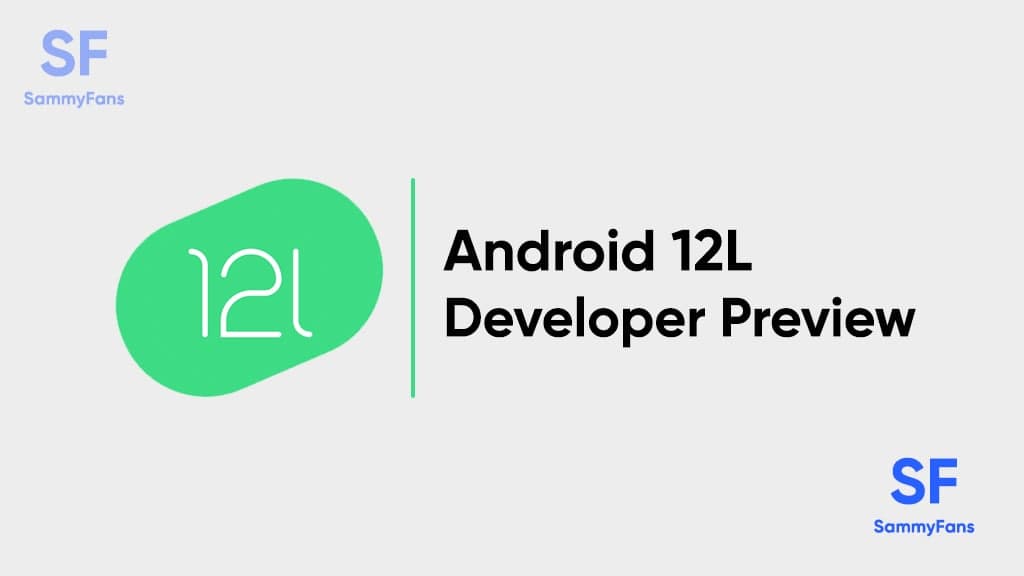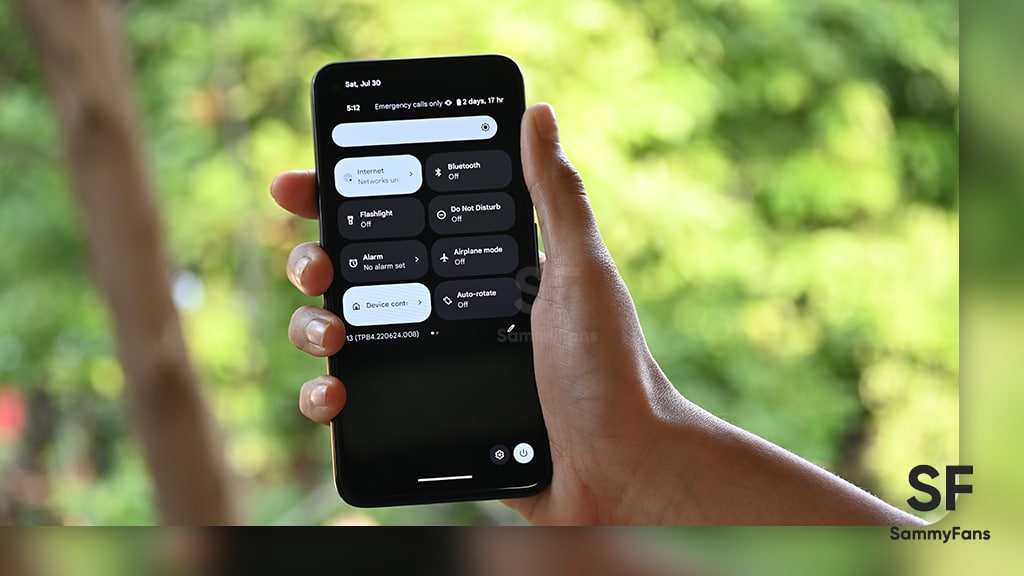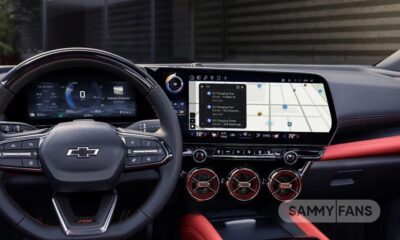Android
Android 12L Developer Preview 1 is official, check what’s new

Android is constantly improving and developing and the platform has evolved over the years to become one of the most influential operating systems in the world. The most recent version of Android 12, the anti-climactic AOSP source code drop is coming in early October.
A few weeks later, Google launched the Pixel 6 Series and created the Pixel Series. At that point, we already knew what was going to happen, though we knew it would be called “Android 12L” and the first beta release for the Pixel lineup would come in December. Android 12L Developer Preview 1 is now available for Lenovo P12 Pro and you can already install it.
Interestingly, we already know a lot about what Google has planned for Android 12L. The update is primarily focused on large-screen foldables and tablets, so Google has partnered with Lenovo to launch the first developer preview.

At present, there are not many things that can be tested on a regular smartphone. Android 12L does nothing more than adjusting the layout of multiple system interfaces to take advantage of larger displays with a screen width greater than 600dp, which means you need a tablet to view them.
As a result, the changelog for Android 12L Developer Preview 1 is too short and this is something we have already seen documenting.
What’s new – Android 12L Developer Preview 1
- ‘Copy apps& data’ in OOBE is not supported.
- Fingerprint unlock is not supported
- Face Unlock is not supported
- TOF sensor-related function is removed
- Stylus key function is not supported but basic function works
- Touchpad functions with two fingers are not supported
- Touchpad swipe up/down/left/right with 3 or 4 fingers are not supported
- Miracast function is not supported
- Screen output via cable (extended screen) can be supported when force desktop mode> is turned on in developer menu.
- Cast Via HDMI (extended screen) can be supported when <force desktop mode> is turned on in developer menu.
- VPN is not tested and may not work properly
- WIDI is not supported
- Please manually connect keyboard to your device via bluetooth to display battery info of keyboard in Settings.

You can do a rollback using Lenovo’s official rollback tool, but again, it also wipes the data on your device and requires the Windows operating system to run it. If you want to try Android 12L on your Lenovo P12 Pro, you can visit the official developer site to learn how to install it.
Get notified –
Aside from SammyFans’ official Twitter and Facebook page, you can also join our Telegram channel and subscribe to our YouTube channel to get notified of every latest development in Samsung and One UI ecosystem. Also, you can follow us on Google News for regular updates.
Android
Google unveils Android 16 Developer Preview with exciting features

Google has kicked off the Developer Preview for Android 16, arriving earlier than expected. Usually, these previews begin in February, but Android 16 DP1 is launching three months ahead of schedule this year.
The earlier release of the DP1 is because Google has moved the official Android 16 release from the third quarter to the second quarter of 2025. It aims to ensure that more devices get access to the major Android updates sooner.
Android 16 DP1 is available for several Pixel devices, including the pixel 6, Pixel 6 Pro, Pixel 6a, Pixel 7, Pixel 7 Pro, Pixel 7a, Pixel Tablet, Pixel Fold, Pixel 8, Pixel 8 Pro, Pixel 8a, Pixel 9, Pixel 9 Pro, Pixel 9 Pro XL, and Pixel Pro Fold, as well as the Android Emulator. It can be identified through version BP21.241018.009.
![]()
The Android 16 Developer Preview brings new features for app developers. It brings a system photo picker that will help apps give users a smoother, more integrated way to select photos without needing extra permissions.
Another new feature is Health Connect, which lets apps access and manage medical records in FHIR format, but only with user permission. The update also includes the latest version of the Privacy Sandbox for privacy protection.
This preview program runs from November 2024 until the final public release next year. Android 16 Beta Program will begin in January, with the final stable release expected in Q2 of 2025. Stay tuned for more updates.
Android 16 to make Quick Settings access easier with one-finger swipe
Android
Google’s Android 15 QPR2 Beta 1 update is now available

Google has released the first beta of Android 15 QPR2 for Pixel users. The update can be identified via build version BP11.241025.006. However, users are also waiting for the stable release of Android 15 QPR1 in December this year.
Android 15 QPR2 Beta 1 update comes with the November 2024 security patch. It is available for a wide range of Pixel devices, including Pixel 6, Pixel 6 Pro, Pixel 6a, Pixel 7, Pixel 7 Pro, Pixel 7a, Pixel Tablet, Pixel Fold, Pixel 8, Pixel 8 Pro, Pixel 8a, Pixel 9, Pixel 9 Pro, Pixel 9 Pro XL, and Pixel 9 Pro Fold, as well as the Android Emulator.
Quarterly Platform Releases are updates that bring more noticeable changes and new features compared to the usual monthly bug fixes. These updates are perfect for testing out bigger UI changes or new features that don’t need to wait for a full Android version release.
![]()
The QPR2 Beta 1 is the second major update for Android 15, with the final version expected to launch in March 2025 (via 9to5Google). This update brings the usual bug fixes, security enhancements, and new features to test.
Users participating in the beta program are advised to report any issues via the Android Beta Feedback app, easily accessible through the app drawer or Quick Settings. Install the update now to get an enhanced experience.
Android 16 to make Quick Settings access easier with one-finger swipe
Android
Android 16 to make Quick Settings access easier with one-finger swipe

Google is reportedly going to bring an interesting change with Android 16, which will no longer require two fingers to pull down the Quick Settings panel. Previously, there were concerns that users would need to swipe down with two fingers to bring up the Quick Settings. Fortunately, Google has decided to simplify this process.
With Android 16, accessing the Quick Settings will only require a single-finger swipe down on the right half of the status bar. The one-finger swipe access aligns it more closely similar to other Android manufacturers, like OnePlus and Samsung, have designed their systems.
Several users didn’t like the idea of needing two fingers to swipe down, as it felt more awkward and less convenient. By switching to a single-finger swipe for Android 16, Google will make it easier for users to manage their settings with less effort. A well-known tipster Mishaal Rahman (via Android Authority) spotted the code for this Quick Settings change.

However, the new design still lacks the ability to swipe seamlessly between the notifications and Quick Settings panels. Hopefully, Google will add this feature before the official release.
In addition to the swipe change, Android 16 will introduce resizable Quick Settings tiles and better categorization to help users find specific settings more easily.
However, these features are still being worked on and may not be fully ready in the current beta. They are expected to roll out in the final Android 16 release, which is expected in mid-2025.










